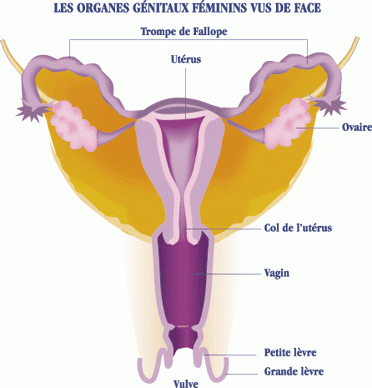-
 Intron
Intron
-
 Promoter
Promoter
-
 OLED
OLED
-
 Inertia
Inertia
-
 Cholinergic
Cholinergic
-
 Protocol
Protocol
-
 Ordovician
Ordovician
-
 Nigerian scam
Nigerian scam
-
 Fish-eye
Fish-eye
-
 Metasomatose
Metasomatose
-
 Antispasmodic
Antispasmodic
-
 Extinction
Extinction
-
 Amniote
Amniote
-
 Time-lapse
Time-lapse
-
 W boson
W boson
-
 Pandemic
Pandemic
-
 Gangue
Gangue
-
 Biosphere reserve
Biosphere reserve
-
 Expression
Expression
-
 Crossover
Crossover
-
 Debubblizing
Debubblizing
-
 CHILL
CHILL
-
 Toxic waste
Toxic waste
-
 Endocytosis
Endocytosis
-
 Demultiplexing
Demultiplexing
-
 Petiole
Petiole
-
 Colonoscopy
Colonoscopy
-
 Azoospermia
Azoospermia
-
 Registrar
Registrar
-
 Polysynthetic
Polysynthetic
Vagina
The vagina is part of the female reproductive system.
Functions of the vagina
The vagina is a tubular conduit which connects the uterus to the outside of the body. It has important reproductive functions. Firstly, it allows the penis to penetrate in sexual intercourse due to lubrication (secretion of vaginal lubrication) by the mucosae in the wall. It then allows the spermatozoa to access the uterus. Finally, it allows the baby to pass through during childbirth.
In addition, it allows menstrual blood and other vaginal secretions to flow.
Structure of the vagina
The vagina is a 10 to 12 centimetre long flexible tube, the walls of which are lined by a mucosa. However, it enlarges during sexual intercourse and childbirth.
The vagina contains a natural vaginal flora that is essential for its equilibrium. The vaginal flora is mainly composed of the Döderlein bacillus, which protects the vagina by competing with pathogenic micro-organisms. Although it is important to keep the vagina clean, aggressive vaginal washing which damages the natural flora should be avoided.
 Position of the vagina in the female genital tract. DR Credits
Position of the vagina in the female genital tract. DR Credits
Latest
Fill out my online form.



